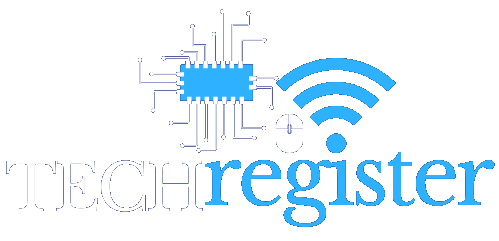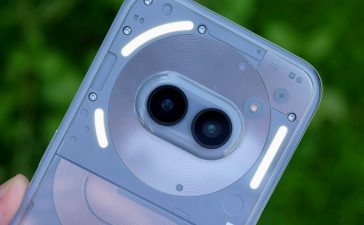In a way, it’s hard to take the Zenbook A14 (UX3407) seriously as a business tool. Until you hold it, it doesn’t seem that extraordinary; another one of Asus’s slim and light Zenbook laptops in a low-key beige finish. It’s compact, with a 31.7 x 21.4 cm desktop footprint that’s not much bigger than a magazine, and at a maximum 1.59cm thick, slim even by the standard of previous Zenbooks.
Pick it up, though, and all comes into focus. At just under 1Kg, it’s incredibly light. It’s so light that it’s hard to imagine all the gubbins of a proper PC lurking in there, or that it’s a machine capable of getting real work done. Yet while it lacks heft, the Zenbook A14 does not lack substance. It won’t be the right laptop for everyone, but it’s a quiet, efficient, and effortlessly portable Copilot+ PC.
Asus Zenbook A14: Design
It’s not just the minimal size and weight that impresses about the latest Zenbook, but how polished it is in its design and construction. The rounded corners and edges and barely noticeable seams show real attention to detail and make it very comfortable to carry or work with on your lap. There’s a single and very solid-feeling hinge, which you can open single-handed without lifting the body of the laptop, which isn’t as easy as it sounds when that body is so light. It’s built primarily from Ceraluminium – aluminum with a matt pseudo-ceramic coating, and feels resilient despite the lightweight materials. It ships in a dark Iceland grey, and the Zabriskie Beige is shown here.
You can’t easily get inside the shell, but then with a 1TB SSD already fitted and the RAM soldered on, as standard with Snapdragon X Copilot+ PCs, there’s not much reason to. It’s also well equipped with connectivity, with two USB4 Type-C ports on the left-hand side, along with a 3.5mm headphone socket and an HDMI 2.1 output. The right-hand side has a single USB 3.2 Gen 2 port. There’s no desperate need to carry a USB extender or dock around with you unless you need Ethernet. In most cases, the built-in Wi-Fi 6E should more than suffice.

Ergonomically, the Zenbook A14 works very smoothly. There’s plenty of room on either side of the touchpad to rest your palms or wrists as you type, while the touchpad itself is 12.5cm wide and stretches down from a couple of millimeters below the space bar to a similar distance just above the edge. It’s almost glassy in its smoothness and extremely responsive. There’s no need to panic if you’ve left your mouse at home on an office working day.
As for the keyboard, we found it a little soft at first, but within a few hours, we’d got to like its 1.3mm of travel, smooth and consistent feel, and clicky actuation when you tap the keys. The function key row at the top is pretty tiny and the Shift and Ctrl keys on the left are also undersized, but we were still up to normal typing speeds in no time, and it’s good to see an isolated cursor pad. All in all, a decent effort.
Asus Zenbook A14: Display
The Zenbook A14’s screen is even better. The 1920 x 1200 resolution might be a little disappointing if you were expecting the kind of QHD+ screens we saw in the Asus ProArt PX13 or the HP Omnibook X14, but the Zenbook’s OLED panel makes up for it with its contrast and color performance. The max brightness is high enough to work with the sun streaming in through a window, at around 425 nits in SDR mode, and you’ve got the usual deep blacks and perfect contrast of OLED. Meanwhile, it covers not just 100% of the sRGB gamut but close to 100% of DCI-P3, with a good, low average Delta E of 1.15. It’s great for productivity apps and entertainment, but also good enough for image-editing and design applications.
Few laptops are perfect, and the A14 falters slightly when it comes to audio; the speakers have some bass and go surprisingly loud, but there’s something hollow and metallic about the delivery. Still, video calls and business audio comes through clearly, which is the main thing. The 1080p webcam is also solid, struggling a bit with color and exposure in low-light conditions, but capturing natural-looking and detailed video in daylight or reasonably bright artificial lighting.
Asus Zenbook A14: Performance
One reason the Zenbook A14 isn’t for everyone is that some users will be looking for more performance. While there is a more expensive Snapdragon X Elite version on its way, our review model uses the Snapdragon Plus X1-26-100 processor; a cut-down, 8-core model with a top speed of 2.98GHz and a slower 1.7TFLOPs Adreno A1-45 GPU.
Now, we never found this spec slow during everyday use, even while running the Edge browser with two dozen open tabs across two windows, including several instances of Google Sheets and Google Docs. Yet the benchmarks make it clear that the Zenbook A14 isn’t as fast as other Copilot+ PCs we’ve looked at in the last six months.
For example, in Geekbench 6, the Zenbook scores 2121 in the single-core test and 10623 in the multi-core benchmark. That places it well behind the HP Omnibook X at 2315 and 12585, not to mention the Microsoft Surface Pro, with 2289 and 13134. It also trails the Acer Swift 14 AI, at 2432 in single-core and 13029 in multi-core, though that machine uses the slightly faster ten-core X1P-64-100 variant of the Snapdragon X Plus.

The Zenbook A14 fares worse for 3D performance, scoring just 1072 in the 3D Mark TimeSpy test, against 1810 from the Omnibook X, 1777 from the Surface Pro, and 1851 from the Acer Swift 14 AI. You’d actually be much better off with a laptop based on the Intel Core Ultra 200 series processors or the AMD Ryzen AI 300 series equivalents, either of which would give you significantly more 3D horsepower.
On the plus side, It’s close to silent, no matter how hard it’s pushed. You can just about hear the low whine of a fan spinning up from time to time, but in general, it’s barely noticeable. What’s more, the Snapdragon Plus X1-26-100 continues Qualcomm’s good work when it comes to AI acceleration and battery life. You’ve still got the same 45TOPS NPU as on the higher-end Snapdragon X CPUs, while the Zenbook A14’s 70Whr battery powered it through 16 hours and 40 minutes of 1080p video playback with the brightness at 170nits.
That exceeds the performance of the Surface Pro and most other Copilot+ PCs bar the HP Omnibook X and Samsung Galaxy Book 5 Pro 360, which hover around the 20 hour mark. In everyday use, it took us effortlessly through a working day with enough juice left to do some extra work in the evening and still get an hour or two in the next day before reaching for the plug.
That battery is also quick to recharge, to the extent that a half-hour recharge will see you back to just under 50%.
Asus Zenbook A14: Is it worth it?
For some, the new Zenbook A14 is going to be lightweight in the negative sense: a laptop without the CPU and GPU performance they need to get more demanding tasks done at speed. For a lot of business users, though, the hardware will be fast enough for daily productivity, and the good ergonomics, low weight, and lengthy battery life will enable them to work effectively from just about anywhere. Speaking for ITPro, we found it a pleasure to use; quiet, light, comfortable, and snappy with an excellent screen. For traveling workers and everyday commuters, it’s a great device.
Asus Zenbook A14 specifications
|
Display |
14-inch 1,920 x 1,200 OLED, 60Hz refresh rate |
Row 0 – Cell 2 |
|
Processor |
Qualcomm Snapdragon X1-26-100, 8-core, up to 2.98GHz |
Row 1 – Cell 2 |
|
GPU |
Qualcomm Adreno X1-45 1.7TFLOPS |
Row 2 – Cell 2 |
|
RAM |
16GB LPDDR5X |
Row 3 – Cell 2 |
|
Ports |
2x USB4 Type-C, USB 3.2 Gen 2 Type-A, HDMI 2.1 |
Row 4 – Cell 2 |
|
Camera |
1080p webcam with IR and Windows Hello |
Row 5 – Cell 2 |
|
Storage |
1TB PCIe4 SSD (Micron) |
Row 6 – Cell 2 |
|
Connectivity |
Wi-Fi 6E, Bluetooth v5.3 |
Row 7 – Cell 2 |
|
Weight |
980g |
Row 8 – Cell 2 |
|
Dimensions |
311 x 214 x 13.4 to 15.9mm |
Row 9 – Cell 2 |
|
Battery Capacity |
70Wh |
Row 10 – Cell 2 |
|
Operating System |
Windows 11 Home |
Row 11 – Cell 2 |












